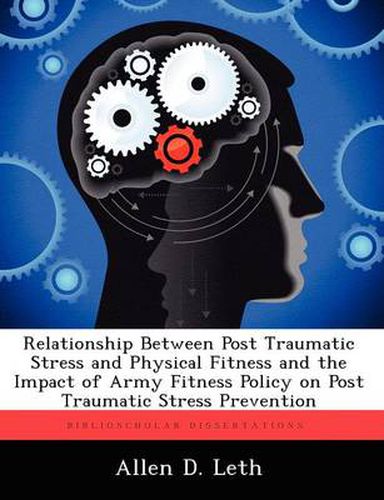Readings Newsletter
Become a Readings Member to make your shopping experience even easier.
Sign in or sign up for free!
You’re not far away from qualifying for FREE standard shipping within Australia
You’ve qualified for FREE standard shipping within Australia
The cart is loading…






This title is printed to order. This book may have been self-published. If so, we cannot guarantee the quality of the content. In the main most books will have gone through the editing process however some may not. We therefore suggest that you be aware of this before ordering this book. If in doubt check either the author or publisher’s details as we are unable to accept any returns unless they are faulty. Please contact us if you have any questions.
Increases in operation tempo since September 11, 2001 have resulted in elevated rates of post traumatic stress (PTS) and reduced levels of physical fitness across the U.S. Army. This thesis sought to identify a relationship between the elevated PTS and decreased physical fitness as well as determine methods to invert both levels experienced by deployed Soldiers. Soldiers experience PTS symptoms when stress levels are not adequately managed resulting in anxiety. Physical training and exercise provide the parasympathetic response needed following stressful situations and increase Soldier resiliency through physical and mental hardiness. Soldiers located at company and battalion level operating bases are often denied the facilities, time, and training necessary to sustain the physical fitness levels developed in the garrison environment. This situation is compounded by U.S. Army policies that reduce the emphasis on physical training during and after deployments. These decisions by senior U.S. Army leadership have served to, directly or indirectly, reduce the potential for physical training and lowered fitness levels of deployed Soldiers. This thesis recommends modifications to U.S. Army policy, establishment of unit level fitness experts, and increased support to the small unit level operating bases in the form of equipment and funding.
$9.00 standard shipping within Australia
FREE standard shipping within Australia for orders over $100.00
Express & International shipping calculated at checkout
This title is printed to order. This book may have been self-published. If so, we cannot guarantee the quality of the content. In the main most books will have gone through the editing process however some may not. We therefore suggest that you be aware of this before ordering this book. If in doubt check either the author or publisher’s details as we are unable to accept any returns unless they are faulty. Please contact us if you have any questions.
Increases in operation tempo since September 11, 2001 have resulted in elevated rates of post traumatic stress (PTS) and reduced levels of physical fitness across the U.S. Army. This thesis sought to identify a relationship between the elevated PTS and decreased physical fitness as well as determine methods to invert both levels experienced by deployed Soldiers. Soldiers experience PTS symptoms when stress levels are not adequately managed resulting in anxiety. Physical training and exercise provide the parasympathetic response needed following stressful situations and increase Soldier resiliency through physical and mental hardiness. Soldiers located at company and battalion level operating bases are often denied the facilities, time, and training necessary to sustain the physical fitness levels developed in the garrison environment. This situation is compounded by U.S. Army policies that reduce the emphasis on physical training during and after deployments. These decisions by senior U.S. Army leadership have served to, directly or indirectly, reduce the potential for physical training and lowered fitness levels of deployed Soldiers. This thesis recommends modifications to U.S. Army policy, establishment of unit level fitness experts, and increased support to the small unit level operating bases in the form of equipment and funding.